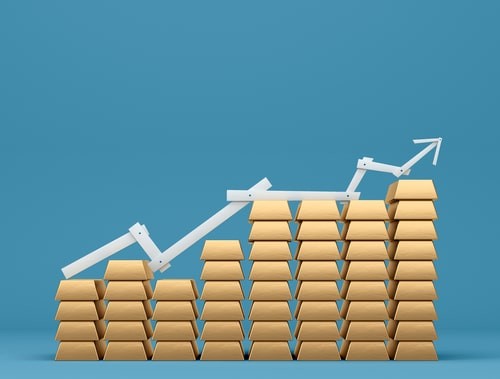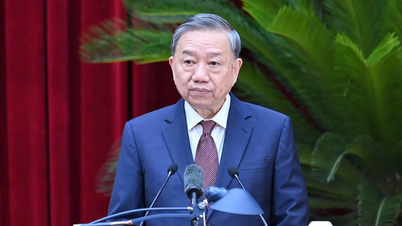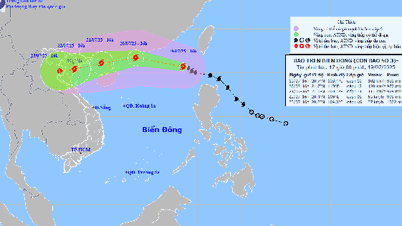LIVE UPDATE TABLE OF GOLD PRICE TODAY 6/4 and EXCHANGE RATE TODAY 6/4
| 1. SJC - Updated: 06/03/2023 09:42 - Website time of supply source - ▼ / ▲ Compared to yesterday. | ||
| Type | Buy | Sell |
| SJC 1L, 10L | 66,350 | 67,050 |
| SJC 5c | 66,350 | 67,070 |
| SJC 2c, 1c, 5c | 66,350 | 67,080 |
| SJC 99.99 gold ring 1 chi, 2 chi, 5 chi | 55,550 | 56,500 |
| SJC 99.99 gold ring 0.5 chi | 55,550 | 56,600 |
| Jewelry 99.99% | 55,400 | 56,100 |
| Jewelry 99% | 54,345 | 55,545 |
| Jewelry 68% | 36,302 | 38,302 |
| Jewelry 41.7% | 21,546 | 23,546 |
World and domestic gold prices this week recorded a slight increase.
In the first trading session of the week on May 29, the price of SJC gold in the Hanoi market was listed by Saigon Jewelry Company at 66.4 - 67.03 million VND/tael (buy - sell), an increase of 50 thousand VND/tael in the buying direction but a decrease of 50 thousand VND/tael in the selling direction compared to the closing session at the end of last week.
In the 3 sessions from May 30 to June 1, domestic gold prices recorded 2 increases and 1 decrease. By June 2, gold prices increased by 50,000 VND/tael, trading above 67 million VND/tael.
Specifically, the price of SJC gold in the Hanoi market was listed by Saigon Jewelry Company at 66.45 - 67.07 million VND/tael (buy - sell), an increase of 50 thousand VND/tael in both buying and selling prices compared to the closing price on June 1.
At the end of the trading session on June 3, the price of SJC gold in the Hanoi market was listed by Saigon Jewelry Company at 66.35 - 67.05 million VND/tael (buy - sell). Thus, compared to the first session of the week on May 29 (66.4 - 67.03 million VND/tael), the price of SJC gold in the Hanoi market listed by Saigon Jewelry Company increased by 50 thousand VND/tael for buying and increased by 20 thousand VND/tael for selling.
 |
| Gold price today June 4, 2023, Gold price endures 'golden hoop' in low season, precious metal still sparkles with 'historic position', SJC gold increases. (Source: Shutterstock) |
In the international market, in the afternoon trading session on June 2, gold prices in the Asian market headed for the biggest weekly increase in nearly two months, thanks to the decline of the USD and hopes that the US Federal Reserve (Fed) would temporarily stop its monetary tightening policy.
Accordingly, the spot gold price remained at $1,977.31/ounce. From the beginning of the week to the afternoon of June 2, the price of this precious metal increased by 1.6%, heading for the strongest weekly increase since the week ending on April 7.
According to the World & Vietnam , the world gold price closed the trading week (June 2) on the Kitco floor at 1,948.5 USD/ounce.
Summary of SJC gold prices at major domestic trading brands at the closing time of June 3:
Saigon Jewelry Company listed the price of SJC gold at 66.35 - 67.05 million VND/tael.
Doji Group currently lists the price of SJC gold at: 66.35 - 66.95 million VND/tael.
Phu Quy Group listed at: 66.35 - 66.95 million VND/tael.
PNJ system listed at: 66.4 - 67.0 million VND/tael.
SJC gold price at Bao Tin Minh Chau is listed at: 66.42 - 67.00 million VND/tael; Rong Thang Long gold brand is traded at 55.46 - 56.36 million VND/tael; jewelry gold price is traded at 55.10 - 56.20 million VND/tael.
Converted according to the USD price at Vietcombank on June 3, 1 USD = 23,650 VND, the world gold price is equivalent to 55.52 million VND/tael, 11.53 million VND/tael lower than the selling price of SJC gold.
Gold prices still suffer from the Fed's "golden hoop"
According to analysts, with the US Congress passing a debt limit agreement and the optimistic signal from the latest jobs report, the gold market does not rule out the possibility of being affected by the Fed raising interest rates this summer, despite the possibility of the Fed pausing its tightening move in June.
Analysts still expect the Fed to pause its rate-hike cycle at its June 13-14 meeting, but the US central bank is likely to conduct another rate hike later this summer.
“The debt ceiling issue is resolved. And the jobs numbers tell us that things are getting a little better, which could be seen as inflation. It makes the Fed more hawkish,” said Sean Lusk , co-director of Walsh Trading.
The good news is that the Fed won’t want to shock the market, said Gainesville Coins precious metals expert Everett Millman : “There’s an argument to be made that the Fed should continue to raise rates given strong economic data.”
According to the CME FedWatch tool, markets are pricing in a 70% chance that the Fed will pause rate hikes at its June meeting.
Markets will be closely watching the May inflation report, due on June 13 - just ahead of the Fed's interest rate decision.
What does this mean for gold?
The gold market is at risk of falling again before continuing its uptrend, analysts said.
“The technical structure suggests a bullish bias in the near term. However, in the short term, there is a risk that gold prices will return to a deeper correction – the $1,926-$1,881/ oz area,” said Michael Boutros , senior technical strategist at Forex.com.
Support for gold is in the $1,950-$80 an ounce range. “Gold will continue to trade sideways in a narrow range. $1,925 an ounce is a key support level. And $1,980-$2,000 an ounce is resistance,” said analyst Millman.
Meanwhile, Lusk is watching the $1,940-$50/ounce level, due to higher equity and dollar performance risks.
“A lot of the factors that have pushed gold higher are gone,” said analyst Millman. “At the same time, we’ve seen a slight rise in the dollar and yields. Those are headwinds for gold… I wouldn’t say gold is overbought.”
The fundamental move toward safety in this environment is to keep gold above $1,900 an ounce, Boutros added.
“When confidence in currencies is eroded, people go back to the classic investment playbook and gold is part of that,” he said.
Closing a volatile May
May started with much excitement as gold pushed to a near record high above $2,080 an ounce. However, that excitement was short-lived as the market spent the next three weeks in a sharp downtrend, with prices falling to a two-month low on May 31.
While it was disappointing that gold failed to hold support and consolidate above $2,000 an ounce, for some investors and analysts, the short-term correction was not a big surprise.
The market has seen this pattern repeated over the past 12 months. As weak economic data fueled fears of a new recession, markets began to price in a rate cut from the Fed. At the start of the month, markets saw a nearly 17% chance of a rate cut in June. At the same time, markets saw rates about 100 basis points lower by the end of the year.
These dovish expectations are in stark contrast to what central banks have been trying to tell investors. Inflationary pressures have eased but remain too high for central banks to signal any change in monetary policy.
Now, with less than two weeks to go until the Fed’s next monetary policy meeting (June 13-14), reality is starting to set in. The 100 basis points of easing by year-end are all but priced in. And even if the Fed leaves rates unchanged in June, there is growing acceptance that another rate hike is still possible this summer.
This new shift in interest rate expectations is creating a challenging environment for gold as it is supporting the US dollar, which is trading at a three-month high. On top of that, summer is traditionally a weak season for the precious metal.
Despite the challenging environment that may prevent gold from reaching all-time highs in the near term, there is still significant long-term support for the precious metal. The biggest factor that will continue to support prices is central bank demand.
This week, the World Gold Council released its annual Central Bank Gold Reserve Survey. Of the 59 central banks surveyed between February 7 and April 7, about 24% said they planned to buy gold in the next 12 months.
The survey results showed that: “Gold’s ‘historical status’ continues to be the top reason for central banks to hold the precious metal, with 77% of respondents saying gold is very or somewhat relevant.”
The clear message is that central bank demand has completely changed the market. While physical demand is not directly pushing gold prices higher, the official sector is providing value and solid support for investors.
The survey also shows why investors should pay attention to central bank demand for gold. The bottom line is that central banks are buying gold for the same reasons investors should. They need to diversify their holdings, protect their currency’s purchasing power and hedge against economic risk.
While gold may be in a challenging environment, analysts still recommend that now is the time to build a strategic position and take advantage of lower prices in the precious metal.
Source


































































































Comment (0)